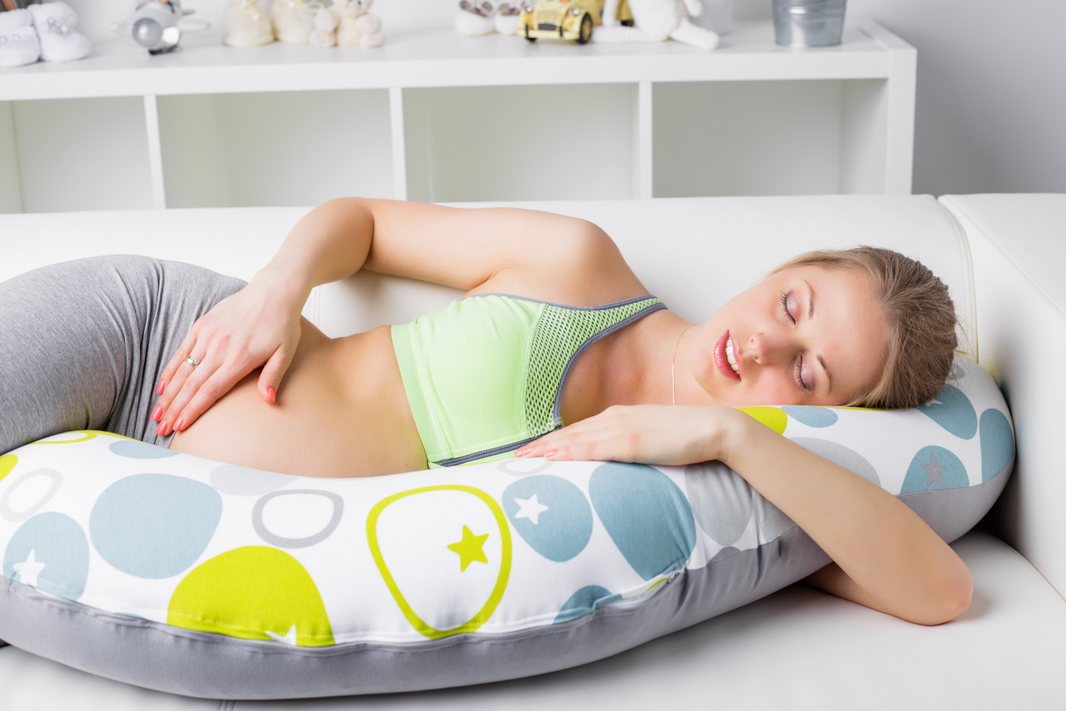In this Article
- Causes of a Bulging Disc on the Neck
- Symptoms
- Diagnosis
- Treatment
- Prevention
- How Neck Contour Pillow can help relieve Bulging Disk on your neck
A bulging disc on the neck is a common condition that affects many people, especially those who lead an active lifestyle or have jobs that require repetitive neck movements. The neck is a complex structure made up of seven cervical vertebrae, which are separated by intervertebral discs. The intervertebral discs act as cushions that absorb shock and allow for smooth movement of the neck. A bulging disc occurs when the outer layer of the disc weakens, causing the inner portion to protrude or bulge outward. In this article, we will discuss the causes, symptoms, diagnosis, and treatment of a bulging disc on the neck.
Causes of a Bulging Disc on the Neck
The spine is an intricate system made up of multiple interconnected bones called vertebrae. These vertebrae play a crucial role in protecting the soft tissues, spinal cord, and nerves running through the spine.
To maintain flexibility, each vertebra is separated by a connective disc, which is made up of strong elastic tissues. When the spine bends or rotates, the discs change size to support movement and prevent friction between bones.
Unfortunately, spinal discs can become dislodged, which is most common in the lower spine but can also occur in the upper portion of the spine. This can cause a bulge in the spinal canal and, in severe cases, lead to a herniated disc.
A herniated disc occurs when damage to the outer layer of the disc causes the inner substance to leak out. This can be caused by sudden or long-term trauma, such as poor posture or lifting weights with improper form. Other potential causes include being overweight, older age, sedentary lifestyle, or intervertebral disc disease.
Spinal discs weaken over time, making them more susceptible to injury. The risk of a bulging or herniated disc increases with age, depending on which part of the disc begins to degenerate first. If the outer supporting layer degenerates first, the inner soft tissue may escape into the vertebral canal and put pressure on the spinal cord or nerve root.
Symptoms
The symptoms of a bulging disc on the neck can vary depending on the severity and location of the bulge. Common symptoms include:
- Pain in the neck, shoulders, or arms
- Numbness or tingling in the arms or hands
- Weakness in the arms or hands
- Headaches
- Stiffness in the neck
- Loss of range of motion in the neck
In severe cases, a bulging disc on the neck can compress the spinal cord, causing more serious symptoms such as difficulty walking, loss of bowel or bladder control, and paralysis.
Diagnosis
If you are experiencing symptoms of a bulging disc on the neck, it is important to seek medical attention. Your doctor will perform a physical examination to assess your symptoms and evaluate your range of motion. They may also order imaging tests such as X-rays, CT scans, or MRI scans to confirm the diagnosis and determine the location and severity of the bulging disc.
Treatment
The treatment of a bulging disc on the neck depends on the severity of the condition and the individual's symptoms. In mild cases, conservative treatments such as rest, ice, and over-the-counter pain medications may be recommended. Physical therapy may also be prescribed to help strengthen the neck muscles and improve range of motion. In more severe cases, prescription medications, such as muscle relaxants or steroids, may be necessary to alleviate pain and inflammation.
If conservative treatments are not effective, more invasive treatments may be necessary. For example, corticosteroid injections may be used to reduce inflammation and pain. In rare cases, surgery may be necessary to remove the bulging portion of the disc or to fuse two vertebrae together to stabilize the spine.
Exercise
In addition to medication and other pain management techniques, doctors may recommend exercises for individuals with a bulging disc. These exercises can be done at home or with the guidance of a physical therapist.
Exercises for a bulging disc in the neck typically involve a combination of gentle stretches and muscle-strengthening exercises. Stretching the neck can help alleviate pain and pressure in the area. Neck stretches may include slow movements of the head in various directions.
Incorporating exercises that strengthen the neck muscles can provide longer-lasting relief by reducing pressure on the neck. It may also strengthen other muscles that support the spine, such as the abdominal muscles.
A physical therapist can also assist in improving posture and form when lifting objects and walking. This may involve ensuring that the back is straight while bending the knees to lift objects from the ground, reducing the risk of future injuries.
Prevention
Preventing a bulging disc on the neck involves maintaining good posture, staying active, and avoiding repetitive strain injuries. It is important to maintain a neutral neck position when working at a computer or performing other tasks that require you to look downward. Take frequent breaks and stretch your neck and shoulders to prevent stiffness and tension. If you participate in sports or other activities that require repetitive neck movements, make sure to use proper technique and take breaks when necessary.
How Neck Contour Pillow can help relieve Bulging Disk on your neck

Best Pillow for Neck Pain
Back Support Systems Neck Contour Pillow
Who it's best for:
- Side and back sleepers
- Hot sleepers
- Sleepers who seek proper spinal alignment
Highlights:
- Gel-infused memory foam designed to help regulate body temperature
- Contoured shape that supports head and neck
- Available in three sizes

Shop Back Support Systems Neck Contour Pillow with 15% off + free shipping. Use code NECKPILLOW15
A neck pillow, also known as a cervical pillow, can be helpful in relieving symptoms of a bulging disc on the neck. A cervical pillow is designed to provide support and alleviate pressure on the neck and spine while sleeping.
When used correctly, a cervical pillow can help maintain a neutral posture in the neck, which can reduce strain on the muscles and ligaments of the neck. By reducing strain on the neck, a cervical pillow can help alleviate pressure on the bulging disc and reduce associated symptoms.
However, it is important to note that not all cervical pillows are created equal. It's important to choose a cervical pillow that is suitable for your sleep position and provides the appropriate level of support for your neck and head. For example, if you sleep on your side, you may need a firmer and thicker cervical pillow than if you sleep on your back.
It's also important to keep in mind that a cervical pillow may not be enough to treat a bulging disc on the neck on its own. You may need other treatments, such as physical therapy, medications, or even surgery, depending on the severity of your condition.
A cervical pillow can be helpful in relieving symptoms of a bulging disc on the neck by reducing strain on the neck and spine while sleeping. However, it's important to choose a cervical pillow that is suitable for your sleep position and to keep in mind that additional treatment may be necessary to effectively treat the condition. If you're experiencing symptoms of a bulging disc on the neck, it's important to speak with your doctor to receive an accurate diagnosis and appropriate treatment.
Conclusion
A bulging disc on the neck is a common conditionthat can cause a range of symptoms, from mild pain and stiffness to more serious issues such as paralysis. While it can be caused by a variety of factors, maintaining good posture and avoiding repetitive strain injuries are key to prevention. If you are experiencing symptoms of a bulging disc on the neck, it is important to seek medical attention to receive an accurate diagnosis and appropriate treatment. In many cases, conservative treatments such as rest, ice, and physical therapy can be effective in alleviating pain and improving range of motion. However, in more severe cases, more invasive treatments such as surgery may be necessary. By taking steps to prevent a bulging disc on the neck and seeking appropriate treatment when necessary, individuals can effectively manage this common condition and reduce the impact it has on their daily lives.








